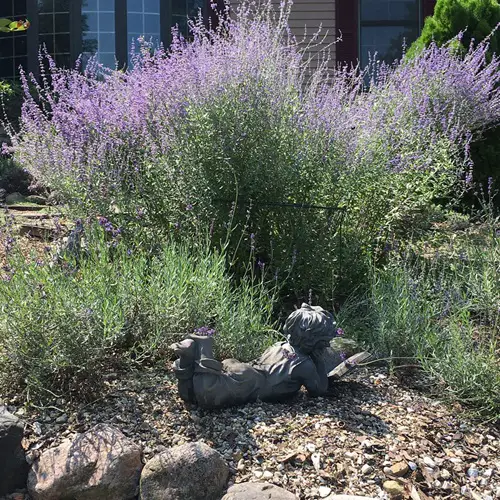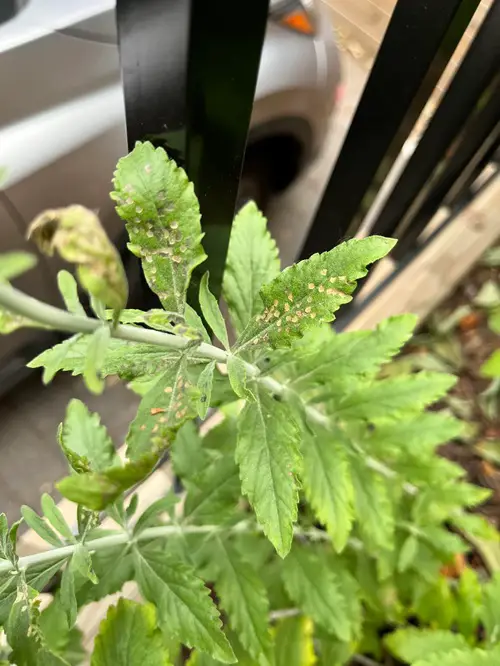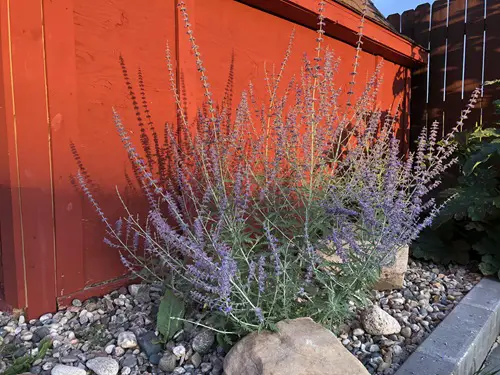Here’s How to Plant Russian Sage in Your Garden to Have Blooms Forever! Enjoy lavender-like beauty for a long time!

This mint family member is the underdog when it comes to outlasting blooms. It may not be lavender, but its aromatic cloudy foliage and whorls of tubular purple flowers make it a breeze to grow. Plant Russian sage in your garden for almost eternal blooms!
How to Keep Russian Sage Blooming Year-Round?
Salvia yangii is a perennial shrub native to Southwest and Central Asia and thrives in USDA zones 4-9. But like most plants do, a time comes when it hits pause on its coveted blue and lilac blooms—unless you trick it into flowering forever-ish!
1. Simulate its Native Habitat
First, make sure your Russian sage is in its element! The zones mentioned above enjoy long, warm summers and cold, dormancy-inducing winters—perfect for extended Russian sage blooms. While it enjoys a range of temperatures, it flourishes in warm temperatures up to 90 F (32 C), which helps it more prolific blooms.
Perfect for Xeriscape, Cottage, and Mediterranean gardens, remember that this dry-weather plant hates wet feet and loves well-draining soil. Since it takes some time, plant it in spring to enjoy the flowers of your labor later in the season!
Note: If you live anywhere outside this range and your weather gets a bit extreme, fret not! Grab a large pot and fill it with sandy, loamy soil with a 6.0-7.0 pH. Plant this salvia, bring it indoors when the temperatures are extreme, and fulfill its light, water, and soil needs.
2. Cut More to Grow More
Snip away spent and dying flowers with sharp scissors or gardening shears. Just before the growing season starts in late winter or early spring, you can also cut back the entire plant by a third.
Deadheading spent blooms and pruning your plant will allow it to use energy for longer-lasting blooms! Plus, this flowering plant blossoms on new wood, and cutting back encourages fresh growth and more flowers.
3. Less Water for More Flowers

Russian sage is drought-tolerant once mature. A regular watering routine helps in its early stages, but you can reduce it later when the plant establishes itself and water only when the top soil seems dry. Overwatering can lead to root rot, early dormancy, yellowing leaves, and wilting.
4. Skip the Fertilizer Frenzy
Lathering your Russian sage with fertilizers won’t help it grow better! The sooner we reckon with this truth, the better your herb shall bloom! This hardy shrub isn’t a heavy feeder and has little use of the common culprit—nitrogen!
A nitrogen-heavy fertilizer will just pump out leaves instead of flowers! Skip fertilizer abuse and lean into lean feeding—an occasional phosphorous and micronutrient-rich feed, like 5-10-10, will keep it lush and flower-full for long!
5. Don’t Skip the Support

This fragrant perennial can get pretty tall, and its long-limbed flower spikes are prime topple targets in windy weather.
Use a bamboo trellis, moss pole, or even a sturdy metal stake to keep it upright, but do it early in the season to avoid damaging the mature stems later; and instead of zip ties, use soft ties to prevent breakage!
Upright, sturdy Russian sage shrubs look elegant, but more importantly, staking them prevents the risk of breaking or bending, allowing them to focus peacefully on their everlasting lavender-like blooms!
6. Get Rid of Pests

While not a pest-magnet, tiny invaders like spider mites, scale insects, and aphids can pop up. Check under leaves and around stems, and if you find your intruders, tackle them right then and there.
Insecticidal soap, a homemade mix of dish soap and water, and other pollinator-friendly remedies may work slowly but will definitely help you rid your plant of these pests.
7. Sneaky Sunshine Hacks
To enjoy Russian sage blooms forever, try out this sneaky sunshine hack. Place reflective materials like aluminum foil or mirrors around your plant to intensify the light it gets! It’s like setting up mini-suns for your sage, but don’t burn it in the process!
Place it strategically so the light emanates gently but does not pierce through the plant. This will create longer sunlight hours and trick the plant into producing abundant blooms! And please don’t do this if you already live in a warm, sunny region!
8. Winterize for Next Season
Once established, this sage variety can tolerate cold as low as -30°F (-34°C). However, you should always protect your Russian sage rather than test the freezing waters!
When winter’s on the horizon, don’t trim it in the fall but prune it later in late winter or early spring. Leaving the old growth intact will provide extra winter protection.
Also, add a 2- 3 inch layer of mulch around the base of the plant to insulate it, but never pile it very close to the stems.
As its roots remain warm and snug through cold weather, this perennial will bounce back and bloom season after season, rewarding you for your TLC!


